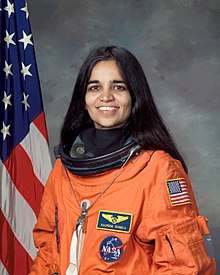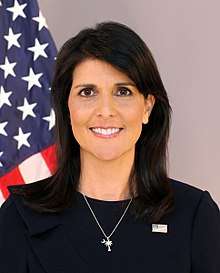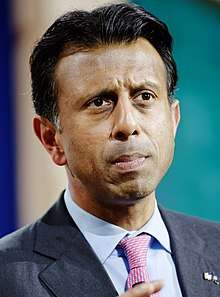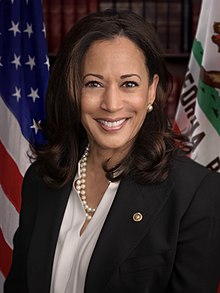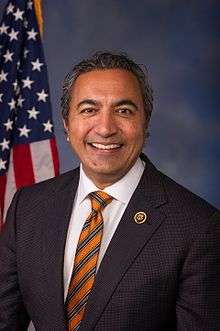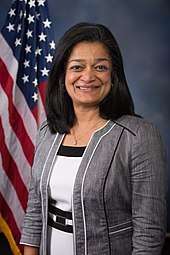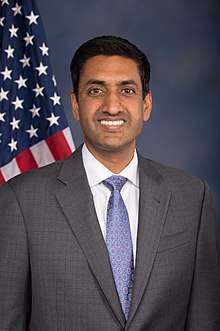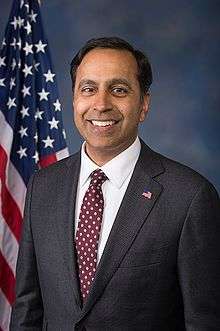Indian Americans
Indian Americans or Indo-Americans are Americans with ancestry from India. The United States Census Bureau uses the term Asian Indian to avoid confusion with Native Americans.
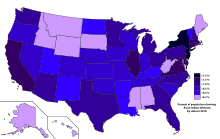 Percent of population with Indian ancestry in 2010 | |
| Total population | |
|---|---|
| 3,852,293[1] 1.2% of the total U.S. population (2018) | |
| Regions with significant populations | |
| |
| Languages | |
| Religion | |
| 53% Hindu 18.6% Christian 8% Muslim 10% Unaffiliated 5% Sikh 2% Jain[5][6] | |
| Related ethnic groups | |
|
Terminology
In the Americas, the term "Indian" has historically been used for indigenous people since European colonization in the 15th century. Qualifying terms such as "American Indian" and "East Indian" were and still are commonly used in order to avoid ambiguity. The U.S. government has since coined the term "Native American" in reference to the indigenous peoples of the United States, but terms such as "American Indian" remain popular among indigenous as well as non-indigenous populations. Since the 1980s, Indian Americans have been categorized as "Asian Indian" (within the broader subgroup of Asian American) by the United States Census Bureau.[7]
While "East Indian" remains in use, the term "South Asian" is often chosen instead for academic and governmental purposes.[8] Indian Americans are included in the census grouping of "South Asian Americans", which includes Bangladeshi Americans, Bhutanese Americans, Burmese Americans, Nepalese Americans, Pakistani Americans, and Sri Lankan Americans[9][10].
History
Pre 1800
Beginning in the 17th century, the East India Company began bringing indentured Indian servants to the American colonies.[11]
The Naturalization Act of 1790 made Asians ineligible for citizenship.[12]
19th century
The first significant wave of Indian immigrants entered the United States in the 19th century. By 1900, there were more than two thousand Indian Sikhs living in the United States, primarily in California.[13] (At least one scholar has set the level lower, finding a total of 716 Indian immigrants to the U.S. between 1820 and 1900.[14]) Emigration from India was driven by difficulties facing Indian farmers, including the challenges posed by the British land tenure system for small landowners, and by drought and food shortages, which worsened in the 1890s. At the same time, Canadian steamship companies, acting on behalf of Pacific coast employers, recruited Sikh farmers with economic opportunities in British Columbia. Racist attacks in British Columbia, however, prompted Sikhs and new Sikh immigrants to move down the Pacific Coast to Washington and Oregon, where they worked in lumber mills and in the railroad industry.[14] Many Punjabi Sikhs who settled in California, around the Yuba City area, formed close ties with Mexican Americans.[11] The presence of Indian Americans also helped develop interest in Eastern religions in the US and would result in its influence on American philosophies such as Transcendentalism. Swami Vivekananda arriving in Chicago at the World's Fair led to the establishment of the Vedanta Society.
20th century
Between 1907 and 1908, Sikhs moved further south to warmer climates in California, where they were employed by various railroad companies. Some white Americans, resentful of economic competition and the arrival of people from different cultures, responded to Sikh immigration with racism and violent attacks.[14] The Bellingham riots in Bellingham, Washington on September 5, 1907 epitomized the low tolerance in the U.S. for Indians and Sikhs, who were called "hindoos" by locals. While anti-Asian racism was embedded in U.S. politics and culture in the early 20th century, Indians were also racialized for their anticolonialism, with U.S. officials pushing for Western imperial expansion abroad casting them as a "Hindu" menace. Although labeled Hindu, the majority of Indians were Sikh.[15] In the early 20th century, a range of state and federal laws restricted Indian immigration and the rights of Indian immigrants in the U.S. In the 1910s, American nativist organizations campaigned to end immigration from India, culminating in the passage of the Barred Zone Act in 1917. In 1913, the Alien Land Act of California prevented Sikhs (in addition to Japanese and Chinese immigrants) from owning land. However, Asian immigrants got around the system by having Anglo friends or their own U.S. born children legally own the land that they worked on. In some states, anti-miscegenation laws made it illegal for Indian men to marry white women. However, it was legal for "brown" races to mix. Many Indian men, especially Punjabi men, married Hispanic women and Punjabi-Mexican marriages became a norm in the West.[14][16]
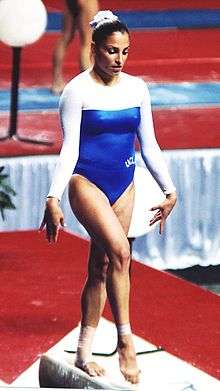
Bhicaji Balsara became the first known Indian to gain naturalized U.S. citizenship. As a Parsi, he was considered a "pure member of the Persian sect" and therefore a "free white person". The judge Emile Henry Lacombe, of the Southern District of New York, only gave Balsara citizenship on the hope that the United States attorney would indeed challenge his decision and appeal it to create "an authoritative interpretation" of the law. The U.S. attorney adhered to Lacombe's wishes and took the matter to the Circuit Court of Appeals in 1910. The Circuit Court of Appeal agreed that Parsis are classified as white.[17]
A. K. Mozumdar was also considered "Caucasian" and therefore eligible for citizenship. Between 1913 and 1923, about 100 Indians were naturalized.
In 1923, the Supreme Court of the United States ruled in United States v. Bhagat Singh Thind that Indians were ineligible for citizenship because they were not "free white persons".[14] The Court argued that the "great body of our people" would reject Indians.[18] Over fifty Indians had their citizenship revoked after this decision, but Sakharam Ganesh Pandit fought against denaturalization. He was a lawyer and married to a white American, and he regained his citizenship in 1927. However, no other naturalization was permitted after the ruling, which led to about 3,000 Indians leaving the United States. Many other Indians had no means of returning to India. One such immigrant, Vaisho Das Bagai, committed suicide in despair: "The return migration was large enough to render questionable the idea of immigration as a one-way system."[14]
After the Immigration Act of 1917, Indian immigration into the U.S. decreased. Illegal entry through the Mexican border became the way of entering the country for Punjabi immigrants. California's Imperial Valley had a large population of Punjabis who assisted these immigrants and provided support. Immigrants were able to blend in with this relatively homogenous population. The Ghadar Party, a group in California that opposed British rule of India, facilitated illegal crossing of the Mexican border, using funds from this migration "as a means to bolster the party's finances".[16] The Ghadar Party charged different prices for entering the US depending on whether Punjabi immigrants were willing to shave off their beard and cut their hair. It is estimated that between 1920 and 1935, about 1,800 to 2,000 Indian immigrants entered the U.S. illegally.[16]
Indians started moving up the social ladder by getting higher education. In 1910, Dhan Gopal Mukerji came to UC Berkeley when he was 20 years old. He was an author of many children's books and won the Newbery Medal in 1928 for his book Gay-Neck: The Story of a Pigeon. However, he committed suicide at the age of 46 while he was suffering from depression. Another student, Yellapragada Subbarow, came to the U.S. in 1922. He became a biochemist at Harvard University, and he "discovered the function of adenosine triphosphate (ATP) as an energy source in cells, and developed methotrexate for the treatment of cancer." However, being a foreigner, he was refused tenure at Harvard. Gobind Behari Lal, who came to UC Berkeley in 1912, became the science editor of the San Francisco Examiner and was the first Indian American to win the Pulitzer Prize for journalism.[16]
After WWII, U.S. policy re-opened the door to Indian immigration, although slowly at first. The Luce–Celler Act of 1946 Luce–Celler Act of 1946 permitted a quota of 100 Indians per year to immigrate to the U.S. It also allowed Indian immigrants to naturalize and become citizens of the U.S., effectively reversing the Supreme Court's 1923 ruling in United States v. Bhagat Singh Thind.[19] The Naturalization Act of 1952, also known as the McCarran-Walter Act, repealed the Barred Zone Act of 1917, but limited immigration from the former Barred Zone to a total of 2,000 per year. In 1910, 95% of all Indian Americans lived on the western coast of the United States. In 1920, that proportion decreased to 75%; by 1940, it was 65%, as more Indian Americans moved to the east coast. In that year, Indian Americans were registered residents in 43 states. The majority of Indian Americans on the west coast were in rural areas, but on the east coast they became residents of urban areas. In the 1940s, the prices of the land increased, and the Bracero program brought thousands of Mexican guest workers to work on farms, which helped shift second-generation Indian American farmers into "commercial, nonagricultural occupations, from running small shops and grocery stores, to operating taxi services and becoming engineers." In Stockton and Sacramento, a new group of Indian immigrants from the state of Gujarat opened several small hotels.[16] In 1955, 14 of 21 hotels enterprises in San Francisco were operated by Gujarati Hindus. By the 1980s, Gujaratis had come to "dominate the industry." An article published by National Geographic mentions several stories of Gujarati immigrants in the hospitality industry.[20] The Immigration and Nationality Act of 1965 dramatically opened entry to the U.S. to immigrants other than traditional Northern European groups, which would significantly alter the demographic mix in the U.S.[21] Not all Indian Americans came directly from India; some came to the U.S. via Indian communities in other countries, including the United Kingdom, Canada, (South Africa, the former British colonies of East Africa,[22] (namely Kenya, Tanzania), and Uganda, Mauritius), the Asia-Pacific region (Malaysia, Singapore, Australia, Fiji),[22] and the Caribbean (Guyana, Trinidad and Tobago, Suriname, and Jamaica).[22] From 1965 until the mid-1990s, long-term immigration from Indian averaged about 40,000 people per year. From 1995 onward, the flow of Indian immigration increased significantly, reaching a high of about 90,000 immigrants in the year 2000.[16]
21st century
The beginning of the 21st century marked a huge significance in the migration trend from India to the United States. The implementation of Privatization and liberalization had changed the entire outflow of migrants. The emergence of Information Technology industry in Indian cities as Bangalore and Hyderabad had led to the large number of migrations to the USA primarily from the erstwhile states of Telangana, Andhra Pradesh and Karnataka in South India. There are sizable population of people from the states of Andhra Pradesh, Telangana, Gujarat, Punjab, Tamil Nadu, Karnataka and Kerala who have settled in different parts of the United States. Indians comprise over 80% of all H-1B visas. Indian Americans have risen to become the richest ethnicity in America, with an average household income of $126,891 (compared to the US average of $65,316).
In the last twenty years, a large number of students have started migrating to the United States to pursue higher education. A variety of estimates state that over 500,000 Indian American students attend higher-education institutions in any given year.[23][24] As per Institute of International Education (IIE) 'Opendoors' report, 202,014 new students from India enrolled in US education institutions.[25] Organizations like the North American Association of Indian Students help organize for the large demographic.
Demographics
According to the 2010 United States Census,[30] the Asian Indian population in the United States grew from almost 1,678,765 in 2000 (0.6% of U.S. population) to 2,843,391 in 2010 (0.9% of U.S. population), a growth rate of 69.37%, one of the fastest growing ethnic groups in the United States.[31][32]
The New York-Newark-Bridgeport, NY-NJ-CT-PA Combined Statistical Area, consisting of New York City, Long Island, and adjacent areas within New York, as well as nearby areas within the states of New Jersey (extending to Trenton), Connecticut (extending to Bridgeport), and including Pike County, Pennsylvania, was home to an estimated 711,174 uniracial Indian Americans as of the 2017 American Community Survey by the U.S. Census Bureau, comprising by far the largest Indian American population of any metropolitan area in the United States;[33] New York City itself also contains by far the highest Indian American population of any individual city in North America, estimated at 246,454 as of 2017.[34] Monroe Township, Middlesex County, in central New Jersey, the geographic heart of the Northeast megalopolis, has displayed one of the fastest growth rates of its Indian population in the Western Hemisphere, increasing from 256 (0.9%) as of the 2000 Census[35] to an estimated 5,943 (13.6%) as of 2017,[36] representing a 2,221.5% (a multiple of 23) numerical increase over that period, including many affluent professionals and senior citizens. In 2014, 12,350 Indians legally immigrated to the New York-Northern New Jersey-Long Island, NY-NJ-PA core based statistical area;[37] As of December 2019, Indian airline carrier Air India as well as United States airline carrier United Airlines were offering direct flights from the New York City Metropolitan Area to and from Delhi and Mumbai. In May 2019, Delta Air Lines announced non-stop flight service between New York JFK and Mumbai, to begin on December 22, 2019.[38] At least twenty Indian American enclaves characterized as a Little India have emerged in the New York City Metropolitan Area.
Other metropolitan areas with large Indian American populations include Atlanta, Baltimore–Washington, Boston, Chicago, Dallas–Ft. Worth, Detroit, Houston, Los Angeles, Philadelphia, and San Francisco–San Jose–Oakland.
The three oldest Indian American communities going back to around 1910 are in lesser populated agricultural areas like Stockton, California south of Sacramento; the Central Valley of California like Yuba City; and Imperial County, California aka Imperial Valley. These were all primarily Sikh settlements.
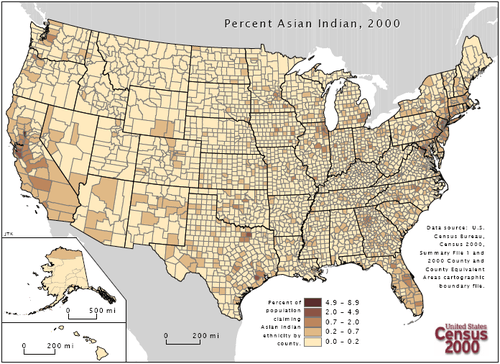
U.S. metropolitan areas with large Asian Indian populations
While the table above provides a picture of the population of Indian American (alone) and Asian Americans (alone) in some of the metropolitan areas of the US, it is incomplete as it does not include multi-racial Asian Americans. Please note that data for multi-racial Asian Americans has not yet been released by the US Census Bureau.
List of U.S. states by the population of Asian Indians
| State | Asian Indian population (2010 Census)[42] | % of state's population (2010 Census) | Asian Indian population (2000 Census) | % change (2000–2010) |
|---|---|---|---|---|
| California | 528,120 | 1.42% | 314,819 | 46.6% |
| New York | 313,620 | 1.62% | 251,724 | 5.9% |
| New Jersey | 292,256 | 3.32% | 169,180 | 72.7% |
| Texas | 245,981 | 0.98% | 129,365 | 90.1% |
| Illinois | 188,328 | 1.47% | 124,723 | 51.0% |
| Florida | 128,735 | 0.68% | 70,740 | 82.0% |
| Virginia | 103,916 | 1.30% | 48,815 | 112.9% |
| Pennsylvania | 103,026 | 0.81% | 57,241 | 80.0% |
| Georgia | 96,116 | 0.99% | 46,132 | 108.3% |
| Maryland | 79,051 | 1.37% | 49,909 | 58.4% |
| Massachusetts | 77,177 | 1.18% | 43,801 | 76.2% |
| Michigan | 77,132 | 0.78% | 54,656 | 41.1% |
| Ohio | 64,187 | 0.56% | 38,752 | 65.6% |
| Washington | 61,124 | 0.91% | 23,992 | 154.8% |
| North Carolina | 57,400 | 0.60% | 26,197 | 119.1% |
| Connecticut | 46,415 | 1.30% | 23,662 | 96.2% |
| Arizona | 36,047 | 0.56% | 14,741 | 144.5% |
| Minnesota | 33,031 | 0.52% | 16,887 | 95.6% |
| Indiana | 27,598 | 0.43% | 14,865 | 85.7% |
| Tennessee | 23,900 | 0.38% | 12,835 | 86.2% |
| Missouri | 23,223 | 0.39% | 12,169 | 90.8% |
| Wisconsin | 22,899 | 0.40% | 12,665 | 80.85 |
| Colorado | 20,369 | 0.41% | 11,720 | 73.8% |
| Oregon | 16,740 | 0.44% | 9,575 | 74.8% |
| South Carolina | 15,941 | 0.34% | 8,856 | 80.0% |
| Kansas | 13,852 | 0.49% | 8,153 | 69.9% |
| Alabama | 13,036 | 0.27% | 6,900 | 88.9% |
| Kentucky | 12,501 | 0.29% | 6,771 | 84.6% |
| Oklahoma | 11,906 | 0.32% | 8,502 | 40.0% |
| Nevada | 11,671 | 0.43% | 5,535 | 110.9% |
| Delaware | 11,424 | 1.27% | 5,280 | 116.4% |
| Louisiana | 11,174 | 0.25% | 8,280 | 35.0% |
| Iowa | 11,081 | 0.36% | 5,641 | 96.4% |
| New Hampshire | 8,268 | 0.63% | 3,873 | 113.5% |
| Arkansas | 7,973 | 0.27% | 3,104 | 156.9% |
| Utah | 6,212 | 0.22% | 3,065 | 102.7% |
| Nebraska | 5,903 | 0.32% | 3,273 | 80.4% |
| Mississippi | 5,494 | 0.19% | 3,827 | 43.6% |
| Washington, D.C. | 5,214 | 0.87% | 2,845 | 83.3% |
| Rhode Island | 4,653 | 0.44% | 2,942 | 58.2% |
| New Mexico | 4,550 | 0.22% | 3,104 | 46.6% |
| Puerto Rico | 3,523 | 0.09% | 4,789 | −26.4% |
| West Virginia | 3,304 | 0.18% | 2,856 | 15.7% |
| Hawaii | 2,201 | 0.16% | 1,441 | 52.7% |
| Idaho | 2,152 | 0.14% | 1,289 | 67.0% |
| Maine | 1,959 | 0.15% | 1,021 | 91.9% |
| North Dakota | 1,543 | 0.23% | 822 | 87.7% |
| Vermont | 1,359 | 0.22% | 858 | 58.4% |
| Alaska | 1,218 | 0.17% | 723 | 68.5% |
| South Dakota | 1,152 | 0.14% | 611 | 88.5% |
| Montana | 618 | 0.06% | 379 | 63.1% |
| Wyoming | 589 | 0.10% | 354 | 66.4% |
| Total Asian-Indian population in US | 2,843,391 | 0.92% | 1,678,765 | 69.4% |
| Year | Pop. | ±% |
|---|---|---|
| 1910 | 2,545 | — |
| 1920 | 2,507 | −1.5% |
| 1930 | 3,130 | +24.9% |
| 1940 | 2,405 | −23.2% |
| 1980 | 361,531 | +14932.5% |
| 1990 | 815,447 | +125.6% |
| 2000 | 1,678,765 | +105.9% |
| 2010 | 2,843,391 | +69.4% |
| 2017 | 4,402,362 | +54.8% |
| 2020 | 5400000+ | — |
Statistics

In 2006, of the 1,266,264 legal immigrants to the United States, 58,072 were from India. Between 2000 and 2006, 421,006 Indian immigrants were admitted to the U.S., up from 352,278 during the 1990–1999 period.[43] According to the 2000 U.S. census, the overall growth rate for Indians from 1990 to 2000 was 105.87 percent. The average growth rate for the U.S. was 7.6 percent. Indians comprise 16.4 percent of the Asian-American community. In 2000, the Indian-born population in the U.S. was 1.007 million. According to the U.S. Census Bureau, between 1990 and 2000, the Indian population in the U.S. grew 130% – 10 times the national average of 13%. Indian Americans are the third largest Asian American ethnic group, following Chinese Americans and Filipino Americans.[44][45][46]
A joint Duke University – UC Berkeley study revealed that Indian immigrants have founded more engineering and technology companies from 1995 to 2005 than immigrants from the UK, China, Taiwan and Japan combined.[47] The percentage of Silicon Valley startups founded by Indian immigrants has increased from 7% in 1999 to 15.5% in 2006, as reported in the 1999 study by AnnaLee Saxenian [48] and her updated work in 2006 in collaboration with Vivek Wadhawa.[49] Indian Americans are making their way to the top positions of almost every big technology company (Google, Facebook, Microsoft, Cisco, Oracle, Adobe, Softbank, Cognizant, Sun microsystems, etc.) Many of them came from very humble origins, for example the current google CEO "Sundar Pichai did not have the privilege of watching television or travelling by car during his childhood. Born and raised in a middle class household, Mr. Pichai used to sleep with his brother in the living room of their two-room apartment that barely had any technology. Despite facing these hardships of everyday life in India, Pichai had a gleam in his eyes of sheer ambition and relentless pursuit."[50]
A recent study shows that 23% of Indian business school graduates take a job in United States.[51]
| Year | Asian Indians (per ACS) |
|---|---|
| 2005 | 2,319,222 |
| 2006 | 2,482,141 |
| 2007 | 2,570,166 |
| 2008 | 2,495,998 |
| 2009 | 2,602,676 |
| 2010 | 2,765,155 |
| 2011 | 2,908,204 |
| 2012 | 3,049,201 |
| 2013 | 3,189,485 |
| 2014 | 3,491,052 |
| 2015 | 3,699,957 |
| 2016 | 3,813,407 |
| 2017 | 4,094,539 |
| 2018 | 4,312,526 |
| 2019 | 4,602,151 |
| 2020 | 4,821,134 |
Socioeconomic status
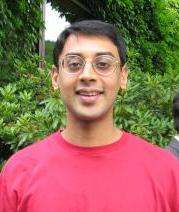
Indian Americans continuously outpace every other ethnic group socioeconomically per U.S. Census statistics.[52] Thomas Friedman, in his 2005 book The World Is Flat, explains this trend in terms of brain drain, whereby a sample of the best and brightest elements in India emigrate to the US in order to seek better financial opportunities.[53] Indians form the second largest group of physicians after non-Hispanic whites (3.9%) as of the 1990 survey, and the percentage of Indian physicians rose to around 6% in 2005.[54]
Education
According to Pew Research in 2015, of Indian Americans aged 25 and older, 72% had obtained a bachelor's degree and 40% had obtained a postgraduate degree, whereas of all Americans, 19% had obtained a bachelor's degree and 11% had obtained a postgraduate degree.[55]
Household income
The median household income for Indian immigrants in 2015 was much higher than that of the overall foreign- and native-born populations. Households headed by Indian immigrants had a median income of $101,591, compared to $51,000 and $56,000 for overall immigrant and native-born households, respectively. By far they are the richest and most successful ethnic group in the USA due to many factors including relatively low wages for highly skilled workers in India which creates an incentive for highly skilled Indians to immigrate.
Approximately 7 percent of Indian immigrants lived in poverty in 2015, a much lower rate than the foreign-born population overall and the U.S. born (17 percent and 14 percent, respectively).[56]
Culture
Media
| |||
Punjabi and Hindi radio stations are available in areas with high Indian populations, for example, Punjabi Radio USA in California and Easy96.com in the New York City metropolitan area, KLOK 1170 AM in San Francisco, RBC Radio; Radio Humsafar, Desi Junction in Chicago; Radio Salaam Namaste and FunAsia Radio in Dallas; and Masala Radio, FunAsia Radio, Sangeet Radio, Radio Naya Andaz in Houston and Washington Bangla Radio on Internet from the Washington DC Metro Area. There are also some radio stations broadcasting in Tamil and Telugu within these communities.[57][58] Houston-based Kannada Kaaranji radio focuses on a multitude of programs for children and adults.[59]
AVS (Asian Variety Show) and Namaste America are nationally available South Asian programming available free to air and can be watched with a television antenna.
Several cable and satellite television providers offer Indian channels: Sony TV, Zee TV, TV Asia, Star Plus, Sahara One, Colors, Big Magic, regional channels, and others have offered Indian content for subscription, such as the Cricket World Cup. There is also an American cricket channel called Willow.
Many metropolitan areas with large Indian American populations now have movie theaters which specialize in showing Indian movies, especially from Bollywood and Telugu cinema.
In July 2005, MTV premiered a spin-off network called MTV Desi which targets Indian Americans.[60] It has been discontinued by MTV.
In 2012, the film Not a Feather, but a Dot directed by Teju Prasad, was released which investigates the history, perceptions and changes in the Indian American community over the last century.
In popular media, several Indian American personalities have made their mark in recent years, including Kovid Gupta, Kal Penn, Hari Kondabolu, Karan Brar, Aziz Ansari, Hasan Minhaj, and Mindy Kaling.
Religion
Religious Makeup of Indian-Americans (2012)[61]
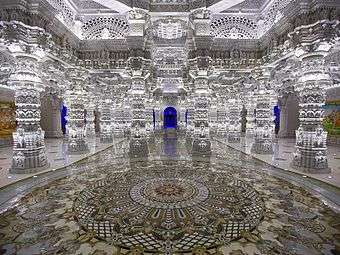
Communities of Hindus, Christians, Muslims, Sikhs, Jains, Buddhists, Zoroastrians, and Indian Jews have established their religions in the United States. According to 2012 Pew Research Center research, 51% consider themselves Hindu, 18% as Christian (Protestant 11%, Catholic 5%, other Christian 3%), 10% as unaffiliated, 10% as Muslims, 5% as Sikh, 2% as Jain.[6] The first religious center of an Indian religion to be established in the US was a Sikh Gurudwara in Stockton, California in 1912. Today there are many Sikh Gurudwaras, Hindu temples, Christian churches, and Buddhist and Jain temples in all 50 states.
Hindus

Some have claimed that as of 2008, the American Hindu population was around 2.2 million,[63] but this estimation is based on the flawed assumption that percentage of Hindus among Indian Americans is the same as in India. Regardless, Hindus are the majority of Indian Americans.[64][65] Many organizations such as ISKCON, Swaminarayan Sampraday, BAPS Swaminarayan Sanstha, Chinmaya Mission, and Swadhyay Pariwar are well-established in the U.S. Hindu Americans have formed the Hindu American Foundation which represents American Hindus and aim to educate people about Hinduism. Swami Vivekananda brought Hinduism to the West at the 1893 Parliament of the World's Religions.[66] The Vedanta Society has been important in subsequent Parliaments. Today, many Hindu temples, most of them built by Indian Americans, have emerged in different cities and towns in the United States.[67][68] More than 18 million Americans are now practicing some form of Yoga. Kriya Yoga was introduced to America by Paramahansa Yogananda. A.C Bhaktivedanta Swami Prabhupada initiated the popular ISKCON, also known as the Hare Krishna movement, while preaching Bhakti yoga.
Sikhs
There are nearly 30 million Sikhs around the world today, and a vast majority of them live in the Indian state of Punjab. There is also a robust and flourishing diaspora, with communities large and small all over the globe. Much of the diaspora is concentrated in the commonwealth due to migration within the British empire, yet Sikhs continue to establish themselves in various countries throughout the world.
From the time of their arrival in the late 1800s, Sikh men and women have been making notable contributions to American society. In 2007, there were estimated to be between 250,000 and 500,000 Sikhs living in the United States, with largest populations living on the East and West Coasts, together with additional populations in Detroit, Chicago, and Austin. The United States also has a number of non-Punjabi converts to Sikhism. Sikh men are typically identifiable by their unshorn beards and turbans (head coverings), articles of their faith. Many organisations like World Sikh Organisation (WSO), Sikh Riders of America, SikhNet, Sikh Coalition, SALDEF, United Sikhs, National Sikh Campaign continue to educate people about Sikhism. There are many "Gurudwaras" Sikh temples present in all states of USA.
Jains
Adherents of Jainism first arrived in the United States in the 20th century. The most significant time of Jain immigration was in the early 1970s. The US has since become a center of the Jain diaspora. The Federation of Jain Associations in North America is an umbrella organization of local American and Canadian Jain congregations.[69] Unlike India and United Kingdom, the Jain community in United States doesn't find sectarian differences, Both Digambara and Śvētāmbara share a common roof.
Muslims
South Asian Muslims (India, Pakistan and Bangladesh) population is about 33% of all Muslims in USA, which makes approximately 400,000 Muslims of India (After 1947) origin living in United States of America.[70] American Muslims of Indian origin is a vibrant community actively engaged in various social, political and economic activities taking place all over the country.[71]
Hasan Minhaj, Farid Zakaria, Aziz Ansari,[72] Pir Vilayat Inayat Khan [73] are few well known Indian American Muslims.
Indian Muslim Americans also congregate with other American Muslims, including those from Pakistan, Nepal, Sri Lanka, Bhutan, Myanmar and Bangladesh when there are events particularly related to their faith and religious believes as the same can be applied for any other religious community, but there are prominent organizations such as the Indian Muslim Council – USA.[74]
Christians
There are many Indian Christian churches across the US; Church of South India, Church of North India, Syro-Malabar Catholic Church, Syro-Malankara Catholic Church, Christhava Tamil Koil, Indian Orthodox Church, Mar Thoma Church (reformed orthodox), Malankara Syriac Orthodox Church, The Pentecostal Mission, Assemblies Of God, Church of God, Sharon Pentecostal Church, Independent Non Denominational Churches like Heavenly Feast, Plymouth Brethren, and the India Pentecostal Church of God. Saint Thomas Christians from Kerala have established their own places of worship across the United States. The website USIndian.org has collected a comprehensive list of all the traditional St. Thomas Christian Churches in the US.[75] There are also Catholic Indians hailing originally from Goa, Karnataka and Kerala, who attend the same services as other American Catholics, but may celebrate the feast of Saint Francis Xavier as a special event of their identity.[76][77][78] The Indian Christian Americans have formed the Federation of Indian American Christian Organizations of North America (FIACONA) to represent a network of Indian Christian organizations in the US. FIACONA estimates the Indian American Christian population to be 1,050,000.[79]
Others
The large Parsi and Irani community is represented by the Federation of Zoroastrian Associations of North America.[80] Indian Jews are perhaps the smallest organized religious group among Indian Americans, consisting of approximately 350 members in the US. They form the Indian Jewish Congregation of USA, with their headquarters in New York City.[81]
Ethnicity
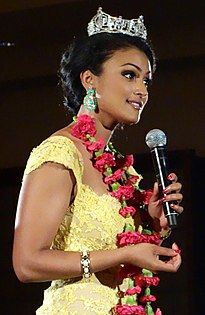
Like the terms "Asian American" or "South Asian American", the term "Indian American" is also an umbrella label applying to a variety of views, values, lifestyles, and appearances. Although Asian-Indian Americans retain a high ethnic identity, they are known to assimilate into American culture while at the same time keeping the culture of their ancestors.[82]
Linguistic affiliation
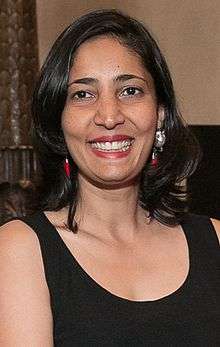
The United States is home to various associations that promote Indian languages and cultures. Some major organizations include Telugu Association of North America (TANA), American Telugu Association (ATA), Federation of Tamil Sangams of North America, Federation of Kerala Associations in North America, Association of Kannada Kootas of America (AKKA), North American Bengali Conference, Orissa Society of the Americas, and Maharashtra Mandal.
Progress
Timeline
- 1600: Beginning of the East India Company.[11]
- 1635: An "East Indian" is documented present in Jamestown, Virginia.[83]
- 1790: The first officially confirmed Indian immigrant arrives in the United States from Madras on a British ship.[84][85]
- 1899–1914: The first significant wave of Indian immigrants arrives in the United States, mostly consisting of Sikh farmers and businessmen from the Punjab region of British India. They arrive in Angel Island, California via Hong Kong. They start businesses including farms and lumber mills in California, Oregon, and Washington.
- 1909: Bhicaji Balsara becomes the first known Indian-born person to gain naturalised U.S. citizenship. As a Parsi, he was considered a "pure member of the Persian sect" and therefore a free White person. The judge Emile Henry Lacombe, of the Southern District of New York, only gave Balsara citizenship on the hope that the United States attorney would indeed challenge his decision and appeal it to create "an authoritative interpretation" of the law. The U.S. attorney adhered to Lacombe's wishes and took the matter to the Circuit Court of Appeals in 1910. The Circuit Court of Appeal agrees that Parsis are classified as white.[17]
- 1912: The first Sikh temple opens in Stockton, California.
- 1913: A.K. Mozumdar becomes the second Indian-born person to earn U.S. citizenship, having convinced the Spokane district judge that he was "Caucasian" and met the requirements of naturalization law that restricted citizenship to free White persons. In 1923, as a result of United States v. Bhagat Singh Thind, his citizenship was revoked.
- 1914: Dhan Gopal Mukerji obtains a graduate degree from Stanford University, studying also at University of California, Berkeley and later goes on to win the Newbery Medal in 1928, and thus becomes the first successful India-born man of letters in the United States, as well as the first popular Indian writer in English.
- 1917: The Barred Zone Act passes in Congress through two-thirds majority, overriding President Woodrow Wilson's earlier veto. Asians, including Indians, are barred from entering the United States.
- 1918: Due to anti-miscegenation laws, there was significant controversy in Arizona when an Indian farmer B. K. Singh married the sixteen-year-old daughter of one of his White American tenants.[86]
- 1918: Private Raghunath N. Banawalkar is the first Indian American recruited into the U.S. Army on February 25, 1918 and serves in the Sanitary Detachment of the 305th Infantry Regiment, 77th Division, American Expeditionary Forces in France. Gassed while on active service in October 1918 and subsequently awarded Purple Heart medal.[87]
- 1918: Earliest record of LGBT Indian Americans, Jamil Singh in Sacramento, California[88]
- 1922: Yellapragada Subbarao, a Telugu from the state of Andhra Pradesh in Southern India arrived in Boston on October 26, 1922. He discovered the role of phosphocreatine and adenosine triphosphate (ATP) in muscular activity, which earned him an entry into biochemistry textbooks in the 1930s. He obtained his Ph.D the same year, and went on to make other major discoveries; including the synthesis of aminopterin (later developed into methotrexate), the first cancer chemotherapy.
- 1923: In United States v. Bhagat Singh Thind, the Supreme Court unanimously rules that Indian people are aliens ineligible for United States citizenship. Bhagat Singh Thind regained his citizenship years later in New York.[89]
- 1943: Republican Clare Boothe Luce and Democrat Emanuel Celler introduce a bill to open naturalization to Indian immigrants to the United States. Prominent Americans Pearl Buck, Louis Fischer, Albert Einstein and Robert Millikan give their endorsement to the bill. President Franklin D. Roosevelt, a Democrat, also endorses the bill, calling for an end to the "statutory discrimination against the Indians".
- 1946: President Harry Truman signs into law the Luce–Celler Act of 1946, returning the right to Indian Americans to immigrate to the United States and become naturalized citizens.
- 1956: Dalip Singh Saund elected to the U.S. House of Representatives from California. He was re-elected to a second and third term, winning over 60% of the vote. He is also the first Asian immigrant from any country to be elected to Congress.
- 1962: Zubin Mehta appointed music director of the Los Angeles Philharmonic, becoming the first person of Indian origin to become the principal conductor of a major American orchestra. Subsequently, he was appointed principal conductor of the New York Philharmonic.
- 1964: Amar G. Bose founded Bose Corporation. He was the chairman, primary stockholder, and also holds the title of Technical Director at Bose Corporation. He was former professor of electrical engineering at Massachusetts Institute of Technology.
- 1965: President Lyndon Johnson signs the INS Act of 1965 into law, eliminating per-country immigration quotas and introducing immigration on the basis of professional experience and education. Satinder Mullick is one of the first to immigrate under the new law in November 1965—sponsored by Corning Glass Works.
- 1968: Hargobind Khorana shared the Nobel Prize for Physiology or Medicine with Marshall W. Nirenberg and Robert W. Holley for discovering the mechanisms by which RNA codes for the synthesis of proteins. He was then on faculty at the University of Wisconsin-Madison, but later moved to MIT.
- 1974: Mafat and Tulsi Patel open the first location of Patel Brothers on Devon Avenue in Chicago, one of the first Indian grocery chains in America
- 1975: Launch of India-West, a leading newspaper covering issues of relevance to the Indian American community.
- 1981: Suhas Patil co-founded Cirrus Logic, one of the first fabless semiconductor companies.
- 1982: Vinod Khosla co-founded Sun Microsystems.
- 1983: Subrahmanyam Chandrasekhar won the Nobel Prize for Physics; Asian Indian Women in America[90] attended the first White House Briefing for Asian American Women. (AAIWA, formed in 1980, is the 1st Indian women's organization in North America.)
- 1987: President Ronald Reagan appoints Joy Cherian, the first Indian Commissioner of the United States Equal Employment Opportunity Commission (EEOC).
- 1988: Sanjay Mehrotra co-founded SanDisk.
- 1994: Rajat Gupta elected managing director of McKinsey & Company, the first Indian-born CEO of a multinational company.
- 1994: Guitarist Kim Thayil, of Indian origin, wins Grammy award for his Indian inspired guitarwork on the album Superunknown by his band Soundgarden.
- 1994: Raj Reddy received the ACM Turing Award (with Edward Feigenbaum) "For pioneering the design and construction of large scale artificial intelligence systems, demonstrating the practical importance and potential commercial impact of artificial intelligence technology".
- 1996: Pradeep Sindhu co-founded Juniper Networks
- 1996: Rajat Gupta and Anil Kumar of McKinsey & Company co-found the Indian School of Business.
- 1997: Kalpana Chawla, one of the six-member crew of STS-87 mission, becomes the first Indian American astronaut.
- 1999: NASA names the third of its four "Great Observatories" Chandra X-ray Observatory after Subrahmanyan Chandrasekhar the Indian-born American astrophysicist and a Nobel laureate.
- 1999: Filmmaker M. Night Shyamalan enters film history with his film The Sixth Sense becoming one of the all-time highest-grossing films worldwide.
- 1999: Rono Dutta becomes the president of United Airlines.
- 2001: Professor Dipak C. Jain (born in Tezpur – Assam, India) appointed as dean of the Kellogg School of Management, Northwestern University. He is the Sandy and Morton Goldman Professor in Entrepreneurial Studies and a professor of marketing at the Kellogg School of Management, where he has been a member of the faculty since 1987.
- 2002: Professor Calyampudi Radhakrishna Rao — 'the world-renowned statistician' is awarded National Medal of Science by President George W. Bush.
- 2005: Abhi Talwalkar, president and chief executive officer of LSI Corporation
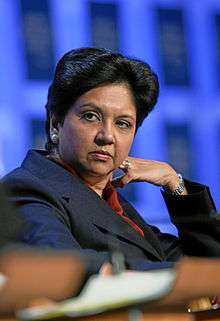
- 2006: Indra Nooyi (born in Chennai, India) appointed as CEO of PepsiCo. She is a Successor Fellow of the Yale Corporation — sometimes, and more formally, known as The President and Fellows of Yale College, is the governing body of Yale University in New Haven, Connecticut. She also serves as a member of the boards of the International Rescue Committee, Catalyst and the Lincoln Center for the Performing Arts, trustees of Eisenhower Fellowships, and currently serves as chairman of the U.S.–India Business Council.
- 2007: Bobby Jindal is elected governor of Louisiana and is the first person of Indian descent to be elected governor of an American state; he is inaugurated on January 14, 2008.
- 2007: Renu Khator appointed to a dual-role as chancellor of the University of Houston System and president of the University of Houston on October 15, 2007.
- 2007: Francisco D'Souza appointed as the president and chief executive officer and a member of the board of directors of Cognizant Technology Solutions. He is one of the youngest chief executive officers in the software services sector at the age 38 in the United States. He was part of the team founded, in 1994, the NASDAQ-100 Cognizant Technology Solutions.
- 2007: Vikram Pandit (born in Nagpur, Maharashtra, India) appointed as CEO of Citigroup. He was previously the president and chief operating officer of the Institutional Securities and Investment Banking Group at Morgan Stanley. He also serves on the boards of Columbia University, Columbia Business School, the Indian School of Business and The Trinity School. He is a former board member of NASDAQ (2000–2003), the New York City Investment Fund.
- 2007: Shantanu Narayen appointed as CEO of Adobe Systems.
- 2008: Treasury Secretary Henry Paulson appoints Neel Kashkari as the Interim U.S. Assistant Secretary of the Treasury for Financial Stability.
- 2008: Raj Chetty appointed as professor of economics at Harvard University the age of 29, one of the youngest ever to receive tenure of professorship in the Department of Economics at Harvard. He is one of the top young economists in the world.
- 2008: Sanjay Jha appointed as Co-CEO of Motorola, Inc..
- 2008: Establishment of the South Asian American Digital Archive (SAADA) to document the history of the South Asian American community.[91]
- 2009: President Barack Obama appoints Preet Bharara (born in Firozpur, India; graduate of Harvard College Class of 1990 and Columbia Law School Class of 1993) as United States attorney for the Southern District of New York Manhattan.
- Farah Pandith appointed as Special Representative to Muslim Communities for the United States Department of State.
- 2009: President Barack Obama appoints Aneesh Paul Chopra as the first American Federal Chief Technology Officer of the United States (CTO).
- 2009: President Barack Obama appoints Eboo Patel and Anju Bhargava on President's Advisory Council on Faith Based and Neighborhood Partnerships.
- 2009: President Barack Obama appoints Vinai Thummalapally as the U.S. Ambassador to Belize
- 2009: President Barack Obama nominates Rajiv Shah, M.D. as the new head of United States Agency for International Development.
- 2009: President Barack Obama nominates Islam A. Siddiqui as the Chief Agricultural Negotiator in the Office of the U.S. Trade Representative.
- 2010: President of Harvard University Catherine Drew Gilpin Faust appoints Nitin Nohria as the tenth dean of Harvard Business School.
- 2010: President of University of Chicago Robert Zimmer appoints Sunil Kumar as the dean of University of Chicago Booth School of Business.
- 2010: Deven Sharma appointed president of Standard & Poor's.
- 2010: Ajaypal Banga appointed president and CEO of MasterCard.
- 2010: President Barack Obama nominates Subra Suresh, Dean of Engineering at MIT as director of National Science Foundation.
- 2010: Year marks the most number of candidates of Indian origin, running for political offices in the United States, including candidates such as: Kamala Harris and Ami Bera.
- 2010: State Representative Nikki Haley is elected Governor of South Carolina, and becomes the first Indian American woman, and second Indian American in general to become Governor of an American state.
- 2010: The World Economic Forum in Geneva, Switzerland names Sanjay Gupta, an Indian American senior executive at Abraxis BioScience and advisor to billionaire investor Dr. Patrick Soon-Shiong to its 2010 list of 'Young Global Leaders'
- 2011: Jamshed Bharucha named president of Cooper Union. Previous to that, he was appointed dean of the Faculty of Arts & Sciences at Dartmouth College in 2001, the first Indian American dean at an Ivy League institution, and Provost at Tufts University in 2002.[92]
- 2011: Satish K. Tripathi appointed as President of University at Buffalo, The State University of New York.
- 2011: Rohit Gupta wins over 100 international awards & accolades for his films Life! Camera Action... and Another Day Another Life.
- 2011: Bobby Jindal is re-elected Governor of Louisiana.
- 2012: Ami Bera is elected to the House of Representatives from California.
- 2013: Vistap Karbhari appointed as president of University of Texas at Arlington
- 2013: Hachette publishes cartoonist Francis Cleetus' compilation of It's Geek 2 Me tech toons titled "Total Timepass Tech Toons".
- 2013: Sri Srinivasan is confirmed as a Judge of the United States Court of Appeals for the District of Columbia Circuit.
- 2013: Nina Davuluri wins Miss America 2014.
- 2013: Arun M Kumar appointed as assistant secretary and director general of the U.S. and Foreign Commercial Service, International Trade Administration in the Department of Commerce.[93]
- 2014: Satya Nadella appointed as CEO of Microsoft.
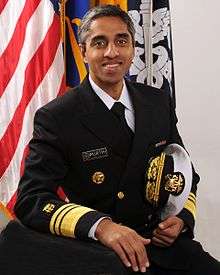
- 2014: Vivek Murthy appointed as the nineteenth Surgeon General of the United States.
- 2014: Rakesh Khurana appointed as the dean of Harvard College, the original founding college of Harvard University.
- 2014: Nikki Haley re-elected to a second term as the Governor of South Carolina in November 2014.[94] She was later appointed as the U.S. Ambassador to the United Nations, in the Trump Administration, in 2017.
- 2014: Manjul Bhargava wins Fields Medal in Mathematics.
- 2015: Sundar Pichai appointed as the chairman and CEO of Google.
- 2016: Pramila Jayapal, Ro Khanna, and Raja Krishnamoorthi are elected to the U.S. House of Representatives and Kamala Harris to the Senate. This puts the total number of people of Indian and South Asian origin in Congress at 5, the largest in history.
- 2017: Hasan Minhaj roasts President Donald Trump at the White House Correspondents' Association Dinner, becoming the first Indian-American and Muslim-American to perform at the event. Also significant due to Donald Trump's vocal disdain for Muslim-Americans during his election campaign.
- 2017: President Donald Trump nominates Ajit Pai as chairman of the Federal Communications Commission (FCC).
- 2017: Balvir Singh was elected to the Burlington County Board of Chosen Freeholders, New Jersey on November 7, 2017. He became the first Asian-American to win a countywide election in Burlington County and the first Sikh-American to win a countywide election in New Jersey.[95]
- 2019: Seven out of the eight winners of the Scripps National Spelling Bee (Saketh Sundar, Abhijay Kodali, Shruthika Padhy, Sohum Sukhatankar, Christopher Serrao, Rohan Raja, and Rishik Gandhasri), a long-running American academic institution, are Indian Americans. They have broken the spelling bee according to several experts and have dominated this American institution.[96]
- 2019: Abhijit Banerjee is awarded the Nobel Memorial Prize in Economic Sciences.[97][98]
Classification
According to the official U.S. racial categories employed by the United States Census Bureau, Office of Management and Budget and other U.S. government agencies, American citizens or resident aliens who marked "Asian Indian" as their ancestry or wrote in a term that was automatically classified as an Asian Indian became classified as part of the Asian race at the 2000 US Census.[99] As with other modern official U.S. government racial categories, the term "Asian" is in itself a broad and heterogeneous classification, encompassing all peoples with origins in the original peoples of the Far East, Southeast Asia, and the Indian subcontinent.
In previous decades, Indian Americans were also variously classified as White American, the "Hindu race", and "other".[100] Even today, where individual Indian Americans do not racially self-identify, and instead report Muslim, Jewish, and Zoroastrian as their "race" in the "some other race" section without noting their country of origin, they are automatically tallied as white.[101] This may result in the counting of persons such as Indian Muslims, Indian Jews, and Indian Zoroastrians as white, if they solely report their religious heritage without their national origin.
Citizenship
Unlike many countries, India does not allow dual citizenship.[102] Consequently, many Indian citizens residing in U.S., who do not want to lose their Indian nationality, do not apply for American citizenship (ex. Raghuram Rajan[103]).
Current issues
Discrimination

In the 1980s, a gang known as the Dotbusters specifically targeted Indian Americans in Jersey City, New Jersey with violence and harassment.[104] Studies of racial discrimination, as well as stereotyping and scapegoating of Indian Americans have been conducted in recent years.[105] In particular, racial discrimination against Indian Americans in the workplace has been correlated with Indophobia due to the rise in outsourcing/offshoring, whereby Indian Americans are blamed for US companies offshoring white-collar labor to India.[106][107] According to the offices of the Congressional Caucus on India, many Indian Americans are severely concerned of a backlash, though nothing serious has taken place.[107] Due to various socio-cultural reasons, implicit racial discrimination against Indian Americans largely go unreported by the Indian American community.[105]
Numerous cases of religious stereotyping of American Hindus (mainly of Indian origin) have also been documented.[108]
Since the September 11, 2001 attacks, there have been scattered incidents of Indian Americans becoming mistaken targets for hate crimes. In one example, a Sikh, Balbir Singh Sodhi, was murdered at a Phoenix gas station by a white supremacist. This happened after September 11, and the murderer claimed that his turban made him think that the victim was a Middle Eastern American. In another example, a pizza deliverer was mugged and beaten in Massachusetts for "being Muslim" though the victim pleaded with the assailants that he was in fact a Hindu.[109] In December 2012, an Indian American in New York City was pushed from behind onto the tracks at the 40th Street-Lowery Street station in Sunnyside and killed.[110] The police arrested a woman, Erika Menendez, who admitted to the act and justified it, stating that she shoved him onto the tracks because she believed he was "a Hindu or a Muslim" and she wanted to retaliate for the attacks of September 11, 2001.[111]
In 2004, New York Senator Hillary Clinton joked at a fundraising event with South Asians for Nancy Farmer that Mahatma Gandhi owned a gas station in downtown St. Louis, fueling the stereotype that gas stations are owned by Indians and other South Asians. She clarified in the speech later that she was just joking, but still received some criticism for the statement later on for which she apologized again.[112]
On April 5, 2006, the Hindu Mandir of Minnesota was vandalized allegedly on the basis of religious discrimination.[113] The vandals damaged temple property leading to $200,000 worth of damage.[114][115][116]
On August 11, 2006, Senator George Allen allegedly referred to an opponent's political staffer of Indian ancestry as "macaca" and commenting, "Welcome to America, to the real world of Virginia". Some members of the Indian American community saw Allen's comments, and the backlash that may have contributed to Allen losing his re-election bid, as demonstrative of the power of YouTube in the 21st century.[117]
In 2006, then Delaware Senator and former U.S. Vice President Joe Biden was caught on microphone saying: "In Delaware, the largest growth in population is Indian Americans moving from India. You cannot go to a 7-Eleven or a Dunkin' Donuts unless you have a slight Indian accent. I'm not joking."[118]
On August 5, 2012, white supremacist Wade Michael Page shot eight people and killed six at a Sikh gurdwara in Oak Creek, Wisconsin.
On February 22, 2017, recent immigrants Srinivas Kuchibhotla and Alok Madasani were shot at a bar in Olathe, Kansas by Adam Purinton, a white American who mistook them for persons of Middle Eastern descent, yelling "get out of my country" and "terrorist". Kuchibhotla died instantly while Madasani was injured, but later recovered.[119]
On December 22, 2018, rapper Famous Dex uploaded a video post to his Instagram page in which he made racially-charged jokes at the expense of an elderly Indian American Hindu cashier at a convenience store in Los Angeles he was frequenting with a friend.[120] During the video, he remarks “Witcho’ lil’... ,” referring to the man's tilaka on his forehead, following a brief exchange about the packaging of the Backwoods Smokes box Famous Dex was purchasing. He then stops and rhetorically adds “That's a mark of Buddha in between yo’ face?,” laughing along with his friend. This is in reference to the 2001 stoner film How High, in which Chuck Deezy's character Ivory opined that the pubic patch between his eyebrows was the ‘mark of Buddha.’[121]
Illegal immigration
In 2009, the Department of Homeland Security estimated that there were fifty thousand (50,000) Indian unauthorized immigrants; they are the sixth largest nationality (tied with Koreans) of illegal immigrants behind Mexico, El Salvador, Guatemala, Honduras, and the Philippines.[122] Indian Americans have had an increase in illegal immigration of 25% since 2000.[123][124] In 2014, Pew Research Center estimated that there are 50 thousand undocumented Indians in the United States.[125]
Immigration
Indians are among the largest ethnic groups legally immigrating to the United States. The immigration of Indians has taken place in several waves since the first Indian came to the United States in the 1700s. A major wave of immigration to California from the region of Punjab took place in the first decade of the 20th century. Another significant wave followed in the 1950s which mainly included students and professionals. The elimination of immigration quotas in 1965 spurred successively larger waves of immigrants in the late 1970s and early 1980s. With the technology boom of the 1990s, the largest influx of Indians arrived between 1995 and 2000. This latter group has also caused surge in the application for various immigration benefits including applications for green card. This has resulted in long waiting periods for people born in India from receiving these benefits.
As of 2012, over 330,000 Indians were on the visa wait list, third only to Mexico and The Philippines.[126]
In December, 2015, over 30 Indian students seeking admission in two US universities—Silicon Valley University and the Northwestern Polytechnic University—were denied entry by Customs and Border Protection and were deported to India. Conflicting reports suggested that the students were deported because of the controversies surrounding the above-mentioned two universities. However, another report suggested that the students were deported as they had provided conflicting information at the time of their arrival in US to what was mentioned in their visa application. "According to the US Government, the deported persons had presented information to the border patrol agent which was inconsistent with their visa status," read an advisory published by Ministry of External Affairs (India) which was published in the Hindustan Times.[127]
Following the incident, the Indian government asked the US government to honour the visas given by its embassies and consulates. In response, the United States embassy advised the students considering studying in the US to seek assistance from Education USA.[127][128]
Media
Politics
|
|
Several groups have tried to create a voice for the community in political affairs, including the United States India Political Action Committee and the Indian American Leadership Initiative, as well as panethnic groups such as South Asian Americans Leading Together and Desis Rising Up and Moving.[129][130][131][132] Additionally, there are industry groups such as the Asian American Hotel Owners Association and the Association of American Physicians of Indian Origin.
A majority tend to identify as moderates and have voted for Democrats in recent elections, in particular supporting Barack Obama in vast numbers.[133] Polls before the 2004 presidential election showed Indian Americans favoring Democratic candidate John Kerry over Republican George W. Bush by a 53% to 14% margin, with 30% undecided at the time.[134] The Republican party has tried to target this community for political support,[135] and in 2007, Republican Congressman Bobby Jindal became the first United States Governor of Indian descent when he was elected Governor of Louisiana.[136] Nikki Haley, also of Indian descent and a fellow Republican, became Governor of South Carolina in 2010. Republican Neel Kashkari is also of Indian descent and ran for Governor of California in 2014. Raja Krishnamoorthi who is a lawyer, engineer and community leader from Schaumburg, Illinois is seeking the Democratic nomination in Illinois's 8th congressional district for the United States House of Representatives.[137] Jenifer Rajkumar is a Lower Manhattan district leader and candidate for the New York State Assembly. If elected, she will be the first Indian American woman elected to the state legislature in New York history.[138] In 2016, Kamala Harris (the daughter of a Tamil Indian American mother, Dr. Shyamala Gopalan Harris, and an Afro-Jamaican American father, Donald Harris[139][140][141]) became the first Indian American[142] and second African American female to serve in the United States Senate.[143] Indian Americans have played a significant role in promoting better India–United States relations, turning the cold attitude of American legislators to a positive perception of India in the post-Cold War era.[144]
Notable people
References
- "ACS Demographic and Housing Estimates". U.S. Census Bureau. December 2019. Retrieved March 20, 2020.
- Terrazas, Aaron (June 9, 2010). "Indian Immigrants in the United States". migrationpolicy.org. Retrieved November 9, 2016.
- https://www.bbc.com/news/world-45902204 Archived December 13, 2019, at the Wayback Machine
- https://www.census.gov/prod/2013pubs/acs-22.pdf Archived February 5, 2016, at the Wayback Machine see page 3
- "Asian Americans: A Mosaic of Faiths". Pew Forum. July 19, 2012. Retrieved August 11, 2014.
- "Pew Forum — Indian Americans' Religions". Projects.pewforum.org. July 18, 2012. Archived from the original on September 4, 2014. Retrieved August 11, 2014.
- Koshy, Susan. "Category Crisis: South Asian Americans and Questions of Race and Ethnicity". Diaspora: A Journal of Transnational Studies. 7 (3): 285–320. doi:10.1353/dsp.1998.0013. ISSN 1911-1568.
- Aspinall, Peter J. (June 1, 2003). "Who is Asian? A category that remains contested in population and health research". Journal of Public Health. 25 (2): 91–97. doi:10.1093/pubmed/fdg021. ISSN 1741-3842. PMID 12848395.
- https://www.census.gov/topics/population/race/about.html
- https://saalt.org/south-asians-in-the-us/demographic-information/
- Thakur, Pradeep (2009). Indian Americans (Part 1). pp. 15–17. ISBN 978-81-908705-5-9.
- Schultz, Jeffrey D. (2002). Encyclopedia of Minorities in American Politics: African Americans and Asian Americans. p. 284. Retrieved September 29, 2015.
- Richard T. Schaefer (March 20, 2008). "Indian Americans". Encyclopedia of Race, Ethnicity, and Society. SAGE Publications. p. 801. ISBN 978-1-4129-2694-2.
- Rangaswamy, Padma. Namasté America : Indian immigrants in an American metropolis. Pennsylvania State University Press. ISBN 0-271-01981-6.
- Seema Sohi (2014). Echoes of Mutiny: Race, Surveillance, and Indian Anticolonialism in North America. Oxford University Press. p. 8. ISBN 978-0-19-937625-4.
Indians in North America, nearly 90 percent of whom where Sikhs from the state of Punjab, were also racialized through colonial gendered discourses. During the early decades of the twentieth century, US Immigration, Justice, and State Department officials cast Indian anti-colonialists as a "Hindoo" menace
- CHAKRAVORTY, SANJOY. The other one percent : Indians in America. Oxford University Press. ISBN 9780190648749.
- Postmodernism & a Sociology...(c). University of Arkansas Press. pp. 143–. ISBN 978-1-61075-322-7.
- Zhao, X. & Park, E.J.W. (2013). Asian Americans: An Encyclopedia of Social, Cultural, Economic, and Political History. Greenwood. pp. 1142. ISBN 978-1-59884-239-5
- "Roots in the Sand — the Archives". PBS. Retrieved February 7, 2013.
- BHATTACHARJEE, YUDHIJIT (September 4, 2018). "How Indian Americans Came to Run Half of All U.S. Motels". Culture & History. Retrieved March 9, 2019.
- Jennifer Ludden. "1965 immigration law changed face of America". NPR. Retrieved December 9, 2016.
- Rangaswamy, Padma (2007). Indian Americans (2007 Hardcover Edition. ed.). New York: Chelsea House. p. 55. ISBN 9780791087862.
gujarati.
- Sharma, Kritika (November 13, 2018). "India holds on to its position as one of the top two countries that send students to US". ThePrint. Retrieved December 30, 2019.
- Sharma, Kritika (November 26, 2019). "21% fewer Indian students went abroad last year as US figures saw biggest drop". ThePrint. Retrieved December 30, 2019.
- https://www.iie.org/Research-and-Insights/Open-Doors/Fact-Sheets-and-Infographics/Fast-Facts
- Laryssa Wirstiuk (April 21, 2014). "Neighborhood Spotlight: Journal Square". Jersey City Independent. Archived from the original on June 30, 2018. Retrieved December 26, 2014.
- "Supplemental Table 2. Persons Obtaining Lawful Permanent Resident Status by Leading Core Based Statistical Areas (CBSAs) of Residence and Region and Country of Birth: Fiscal Year 2014". U.S. Department of Homeland Security. Retrieved June 1, 2016.
- "Yearbook of Immigration Statistics: 2013 Supplemental Table 2". U.S. Department of Homeland Security. Retrieved June 1, 2016.
- "Yearbook of Immigration Statistics: 2012 Supplemental Table 2". U.S. Department of Homeland Security. Archived from the original on December 22, 2014. Retrieved June 1, 2016.
- "American FactFinder — Results". Archived from the original on February 14, 2020. Retrieved January 30, 2016.
- "Census shows growth among Asian Indians". USA Today. May 17, 2011.
- "ACS DEMOGRAPHIC AND HOUSING ESTIMATES 2013–2017 American Community Survey 5-Year Estimates New York-Newark, NY-NJ-CT-PA CSA". United States Census Bureau. Archived from the original on February 13, 2020. Retrieved January 27, 2019.
- "ACS DEMOGRAPHIC AND HOUSING ESTIMATES 2017 American Community Survey 1-Year Estimates Asian Indian alone – New York City, New York". U.S. Census Bureau. Archived from the original on February 14, 2020. Retrieved February 11, 2019.
- "Profile of General Demographic Characteristics: Census 2000 Summary File 1 (SF 1) 100-Percent Data". United States Census Bureau. Archived from the original on February 12, 2020. Retrieved February 11, 2017.
- "ACS DEMOGRAPHIC AND HOUSING ESTIMATES 2013–2017 American Community Survey 5-Year Estimates – Monroe township, Middlesex County, New Jersey". United States Census Bureau. Archived from the original on February 13, 2020. Retrieved February 11, 2019.
- "Supplemental Table 2. Persons Obtaining Lawful Permanent Resident Status by Leading Core Based Statistical Areas (CBSAs) of Residence and Region and Country of Birth: Fiscal Year 2014". Department of Homeland Security. Retrieved May 31, 2016.
- Alex Gailey (May 1, 2019). "Delta picks New York City over Atlanta for nonstop Mumbai route". Atlanta Business Chronicle. Retrieved May 4, 2019.
- "Asian Population Demographics | Largest Asian Growth". Proximityone.com. Retrieved August 10, 2014.
- "America's Asian Population Patterns 2000–2010". Proximityone.com. Retrieved February 7, 2013.
- "U.S. Census website". US Census Bureau. Retrieved March 16, 2015.
- "Indian-American Population, State-wise". US-India Friendship.net. Archived from the original on November 6, 2012. Retrieved November 9, 2016.
- "Yearbook of Immigration Statistics: Fiscal Years 1820 to 2006". Retrieved August 11, 2014.
- United States Census Bureau. "US demographic census". Archived from the original on February 12, 2020. Retrieved December 16, 2006.
- United States Census Bureau. "US demographic census". Archived from the original on February 12, 2020. Retrieved November 19, 2006.
- United States Census Bureau. "US demographic census". Archived from the original on February 12, 2020. Retrieved November 19, 2006.
- Assisi, Francis C. (January 4, 2007). "News & Analysis: Skilled Indian Immigrants Create Wealth for America". INDOlink. Archived from the original on June 8, 2011. Retrieved July 17, 2010.
- Saxenian, AnnaLee (1999). "Silicon Valley's New Immigrant Entrepreneurs" (PDF). Public Policy Institute of California. Cite journal requires
|journal=(help) - "The Face of Success, Part I: How the Indians Conquered Silicon Valley". Inc.com. January 13, 2012. Retrieved December 19, 2017.
- "9 Indian CEOs in Silicon Valley Sharing Common Traits". Proactive Business Consultants. June 24, 2016. Retrieved December 19, 2017.
- "Report: 25% of Indian B-School Graduates get a job in Americas". IANS. news.biharprabha.com. Retrieved March 19, 2014.
- "USA's best: Indian Americans top community — World — IBNLive". Ibnlive.in.com. February 20, 2009. Retrieved February 7, 2013.
- "MIT World » : The World is Flat". Mitworld.mit.edu. Archived from the original on March 28, 2012. Retrieved August 11, 2014.
- Bouvier, Leon F. "Doctors and Nurses: A Demographic Profile | Center for Immigration Studies". Cis.org. Retrieved November 9, 2016.
- "Indians in the U.S. Fact Sheet". POewsocialtrends.org. September 8, 2017. Retrieved January 9, 2018.
- "Indian Immigrants in the United States". migrationpolicy.org. August 29, 2017. Retrieved December 18, 2017.
- "Thendral.com – First American Tamil Radio". April 12, 2004. Archived from the original on April 12, 2004. Retrieved January 9, 2018.
- "A Telugu Radio Show — Every Saturday". Google Groups. June 11, 2008. Retrieved July 17, 2010.
- "houstonkannada.com". houstonkannada.com. Retrieved February 7, 2013.
- "Music Videos, Reality TV Shows, Celebrity News, Top Stories | MTV". Mtvdesi.com. April 8, 2014. Retrieved August 11, 2014.
- "Asian Americans: A Mosaic of Faiths". Pew Research Center. Pew Research Center. July 19, 2012. Retrieved April 28, 2019.
- Frances Kai-Hwa Wang. "World's Largest Hindu Temple Being Built in New Jersey". NBC News. Retrieved January 30, 2017.
- "So, How Many Hindus Are There in the US?" (PDF). Retrieved January 30, 2016.
- "Composite U.S. Demographics". Adherents.com. Retrieved August 11, 2014.
- Hinduism Archived December 30, 2006, at the Wayback Machine
- Integrated Publishing. "Origin Of Hinduism In America". Tpub.com. Retrieved August 11, 2014.
- The Council of Hindu Temples of North America Archived April 18, 2006, at the Wayback Machine
- "Hindu Temples in USA — HinduTemples in America". Hindutemples.us. Retrieved August 11, 2014.
- "About JAINA". Jaina.org. Retrieved January 9, 2018.
- https://www.pewresearch.org/fact-tank/2018/01/03/new-estimates-show-u-s-muslim-population-continues-to-grow/
- https://www.allied-media.com/AM/
- https://www.azizansari.com/
- https://www.cbsnews.com/pictures/famous-muslim-celebrities/27/
- "Welcome to Indian Muslim Council-USA". Web.archive.org. Archived from the original on October 23, 2006. Retrieved November 2, 2006.
- Traditional Indian Churches in the US at a Glance Archived August 19, 2014, at the Wayback Machine, usindian.org Archived August 19, 2014, at the Wayback Machine
- Goans of the North Atlantic. By Clifford Pereira. In Migration, technology, and transculturation: A global Perspective. Edited by Myna German and Padmini Banerjee. Center for International and Global Studies. 2011. Lindenwood University Press. St. Charles MO, USA. ISBN 978-0-9846307-4-5
- "Indian Church, Churches and places of worship in the US. Asian Church in America, Indians, NRIs and Immigrants in America from Garamchai.Com". Garamchai.Com ... Retrieved July 17, 2010.
- Arles, Siga. "Evangelism in the Changing Context of India" (PDF). Retrieved January 30, 2016.
- A Merry Indian American Christmas Archived July 14, 2011, at the Wayback Machine
- "Home". F E Z A N A. Retrieved August 11, 2014.
- "Indian Jewish Congregation of USA Newsletter" (PDF). Retrieved August 11, 2014.
- Mogelonsky, "Asian-Indian Americans," pp. 32–38
- Martha W. McCartney; Lorena S. Walsh; Ywone Edwards-Ingram; Andrew J. Butts; Beresford Callum (2003). "A Study of the Africans and African Americans on Jamestown Island and at Green Spring, 1619–1803" (PDF). Historic Jamestowne. National Park Service. Retrieved May 11, 2013.
Francis C.Assisi (May 16, 2007). "Indian Slaves in Colonial America". India Currents. Archived from the original on November 27, 2012. Retrieved May 11, 2013. - The Multilingual Apple: Languages in New York City — Google Books. Books.google.co.in. Retrieved August 10, 2014.
- Okihiro, Gary Y. (2005). The Columbia Guide To Asian American History. Columbia University Press. p. 178. ISBN 9780231115117. Retrieved May 10, 2013.
- "Chapter 9: Home Life". Echoes of Freedom: South Asian Pioneers in California, 1899–1965. The Library, University of California, Berkeley. Retrieved January 8, 2009.
- Frank B. Tiebout, A History of the 305th Infantry (New York: 305th Infantry Auxiliary), 431.
- Shah, Nayan (2011). "Policing Strangers and Borderlands". Stranger Intimacy: Contesting Race, Sexuality, and the Law in the North American West. Berkeley, California: University of California Press. pp. 74–78. ISBN 978-0-520-27087-9.
- "Roots in the Sand — Bhagat Singh Thind". PBS. Retrieved August 11, 2014.
- "Asian Indian Women in America". Aiwausa.org. August 15, 1980. Retrieved August 11, 2014.
- ""Mission Statement", South Asian American Digital Archive". Saadigitalarchive.org. Retrieved January 9, 2018.
- "12th President of Cooper Union". Bharucha.org. Retrieved January 9, 2018.
- "Indian American Arun Kumar nominated to Top White House Post". Retrieved October 6, 2013.
- "Republican Nikki Haley wins governor race in South Carolina". The Washington Post. November 4, 2014.
- Hefler, Jan. "Race-baiting ads backfired, says Sikh who broke barriers in South Jersey freeholder race", The Philadelphia Inquirer, November 8, 2017. Accessed December 2, 2017.
- Ryan Prior. "7 of the 8 Spelling Bee winners are Indian Americans. Here's why that's not surprising". CNN. Retrieved September 22, 2019.
- "The Prize in Economic Sciences 2019" (PDF) (Press release). Royal Swedish Academy of Sciences. October 14, 2019.
- Desk, The Hindu Net (October 14, 2019). "Abhijit Banerjee among three to receive Economics Nobel". The Hindu. ISSN 0971-751X. Retrieved October 14, 2019.
- "State and County QuickFacts". US Census Bureau. Archived from the original on March 27, 2014. Retrieved May 10, 2014.
- Assisi, Frank. Desparades. 2006. Are Desis White? Archived October 7, 2006, at the Wayback Machine.
- Surveillance Epidemiology and End Results. 2007. May 21, 2007. "Race and Nationality Descriptions from the 2000 US Census and Bureau of Vital Statistics" Seer.cancer.gov
- Dual Nationality: India and the United States Archived March 17, 2016, at the Wayback Machine
- "Raghuram Rajan taken aback by query about citizenship". Times of India. Retrieved January 9, 2018.
- Michel Marriott, Special to The New York Times (October 12, 1987). "In Jersey City, Indians Protest Violence". Jersey City (Nj): Nytimes.com. Retrieved August 11, 2014.
- "Kavita Chhibber". Kavitachhibber.com. Archived from the original on January 2, 2018. Retrieved January 9, 2018.
- Indophobia: Facts versus Fiction, Arvind Panagariya, Columbia University archives of The Economic Times
- Worries about technical-job losses, discrimination Archived July 4, 2008, at the Wayback Machine, by Amy Yee, The Financial Times Ltd., 2004
- "Center for the study of history and memory". Dlib.indiana.edu. Retrieved August 11, 2014.
- "Hindu Beaten Because He's Muslim". CBS News. November 25, 2002.
- Santora, Marc; Maslin Nir, Sarah (December 28, 2012). "Woman Sought After 2nd Fatal Shove Onto Subway Tracks This Month". New York Times. Retrieved December 31, 2012.
- Lee, Vivian (December 31, 2012). "Subway Victim Recalled as Always Lending a Hand". New York Times. Retrieved December 31, 2012.
- Suhr, Jim (January 7, 2004). "Hillary Clinton regrets Gandhi joke — US news — Life — Race & ethnicity | NBC News". NBC News. Retrieved February 7, 2013.
- "Minneapolis Temple Attack Leaves Hindu Community In Shock". Hindu American Foundation. April 12, 2006. Retrieved May 10, 2014.
- wcco.com – 600 Attend Forum About Hindu Temple Vandalism Archived September 29, 2007, at the Wayback Machine
- "New Header". Kare11.com. April 14, 2006. Archived from the original on September 12, 2012. Retrieved August 11, 2014.
- indianexpress.com Archived February 5, 2007, at the Wayback Machine
- Andrew Leonard (November 9, 2006). "How the World Works: Hail Macaca!". Salon.com.
- http://www.nbcnews.com/id/13757367/ns/politics/t/biden-explains-indian-american-remarks/
- "Indian engineer killed in Kansas\". Hindustan Times. February 28, 2017. Retrieved February 28, 2017.
- Famous Dex Says Disgusting Racial Slur To Indian Store Clerk – BlackRoomMedia Reporting
- Famous Dex Offended Hindus By Joking On A Indian Cashier – DJ Akadmiks Reporting
- Michael Hoefer; Nancy Rytina; Bryan C. Baker (January 2010). "Estimates of the Unauthorized Immigrant Population Residing in the United States: January 2009" (PDF). DHS Office of Immigration Statistics. United States Department of Homeland Security. Retrieved March 8, 2011.
- "Indians fastest-growing illegal immigrants in U.S". Siliconindia.com. Retrieved August 11, 2014.
- Illegal Indians in US Archived August 15, 2009, at the Wayback Machine
- Guillermo, Emil (December 1, 2014). "Numbers Reveal How Asian Undocumented Remain Hidden in America". NBC News. Retrieved December 2, 2014.
- "Annual Report of Immigration Visa Applicants in the Family-sponsored and Employment-based preferences Registered at the National Visa Center as of November 1, 2012" (PDF). Bureau of Consular Affairs. United States Secretary of State. November 1, 2012. Archived from the original (PDF) on February 17, 2013. Retrieved February 5, 2013.
- "'Honour your own visas,' says India as US clarifies on deportation of Indians — Times of India". The Times of India. Retrieved January 4, 2016.
- "EducationUSA". EducationUSA. Retrieved January 9, 2018.
- "USINPAC — US India Political Action Committee | Indian American Community". www.usinpac.com. October 31, 2011. Retrieved August 11, 2014.
- "South Asian Americans Leading Together". Saalt.org. Retrieved May 10, 2014.
- "Desis Rising Up and Moving". Drumnyc.org. Retrieved May 10, 2014.
- "Desis Rising Up and Moving (DRUM) materials in the South Asian American Digital Archive (SAADA)". Saadigitalarchive.org. Retrieved August 11, 2014.
- Ghosh, Palash (November 5, 2012). "Why Do Indian-Americans Love Barack Obama And The Democrats?". International Business Times. Retrieved May 10, 2014.
- "Asia Times — Asia's most trusted news source". Atimes.com. September 16, 2004. Archived from the original on September 19, 2008. Retrieved August 11, 2014.
- "Indian immigrants' son new La. governor". Yahoo! News. Archived from the original on October 23, 2007. Retrieved October 24, 2007.
- "Congressional bid f Indian American politician gains momentum". The Economic Times. December 29, 2015. Retrieved January 13, 2016.
- "Record Number Of Indian-American Women Running For Public Office In 2016". Forbes. March 17, 2016. Retrieved July 8, 2016.
- "PM Golding congratulates Kamala Harris-daughter of Jamaican – on appointment as California's First Woman Attorney General". Jamaican Information Service. December 2, 2010. Archived from the original on January 15, 2012. Retrieved February 2, 2011.
- "California Attorney General Kamal Harris marries Douglas Emhof". The American Bazaar. September 2, 2014.
- Staff, CalWatchdog (April 7, 2013). "Why Kamala Harris is probably not thrilled with compliment". CalWatchdog.com.
- "Election Day 2016 updates: Trump defeats Clinton to become next president of U.S." Latimes.com. Retrieved January 9, 2018.
- "Kamala Harris is elected California's new U.S. senator". LA Times. Retrieved November 9, 2016.
- "Indian Lobbying and its Influence in US Decision Making – SAGE Publications Inc". Us.sagepub.com. Retrieved January 9, 2018.
Further reading
- Atkinson, David C. The burden of white supremacy: Containing Asian migration in the British empire and the United States (U North Carolina Press, 2016).
- Bacon, Jean. Life Lines: Community, Family, and Assimilation among Asian Indian Immigrants (Oxford UP, 1996).
- Bhalla, Vibha. "'Couch potatoes and super-women' Gender, migration, and the emerging discourse on housework among Asian Indian immigrants." Journal of American Ethnic History 27.4 (2008): 71-99. online
- Joshi, Khyati Y. New Roots in America's Sacred Ground: Religion, Race and Ethnicity in Indian America (Rutgers UP, 2006).
- Khandelwal, Madhulika S. Becoming American, Being Indian: An Immigrant Community in New York City (Cornell UP, 2002).
- Maira, Sunaina Marr. Desis in the House: Indian American Youth Culture in NYC (Temple UP, 2002).
- Min, Pyong Gap, and Young Oak Kim. "Ethnic and sub-ethnic attachments among Chinese, Korean, and Indian immigrants in New York City." Ethnic and Racial Studies 32.5 (2009): 758-780.
- Pavri, Tinaz. "Asian Indian Americans." Gale Encyclopedia of Multicultural America, edited by Thomas Riggs, (3rd ed., vol. 1, Gale, 2014), pp. 165–178. online
- Rangaswamy, Padma. Namaste America: Indian Immigrants in an American Metropolis (Pennsylvania State UP, 2000).
- Rudrappa, Sharmila. Ethnic Routes to Becoming American: Indian Immigrants and the Cultures of Citizenship (Rutgers UP, 2004).
- Schlund-Vials, Cathy J., Linda Trinh Võ, and K. Scott Wong, eds. Keywords for Asian American Studies (NYU Press, 2015).
- Shukla, Sandhya. India Abroad: Diasporic Cultures of Postwar America and England (Princeton UP, 2003).
- Sohi, Seema. Echoes of Mutiny: Race, Surveillance, and Indian Anticolonialism in North America (2014) excerpt
- Thernstrom, Stephen, ed. Harvard Encyclopedia of American Ethnic Groups (1980) pp 296–301. Online free to borrow
External links
- The American Institute of India Studies (AIIS)
- Madhusudan and Kiran C. Dhar India Studies Program at Indiana University Bloomington
- From 1917 to 2017 Immigration, Exclusion, and “National Security" by Seema Sohi
- Widely exhibited across museums in the US, historic photography project of Indians living in the late 1980s in America

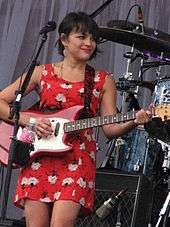
.jpg)
.png)
